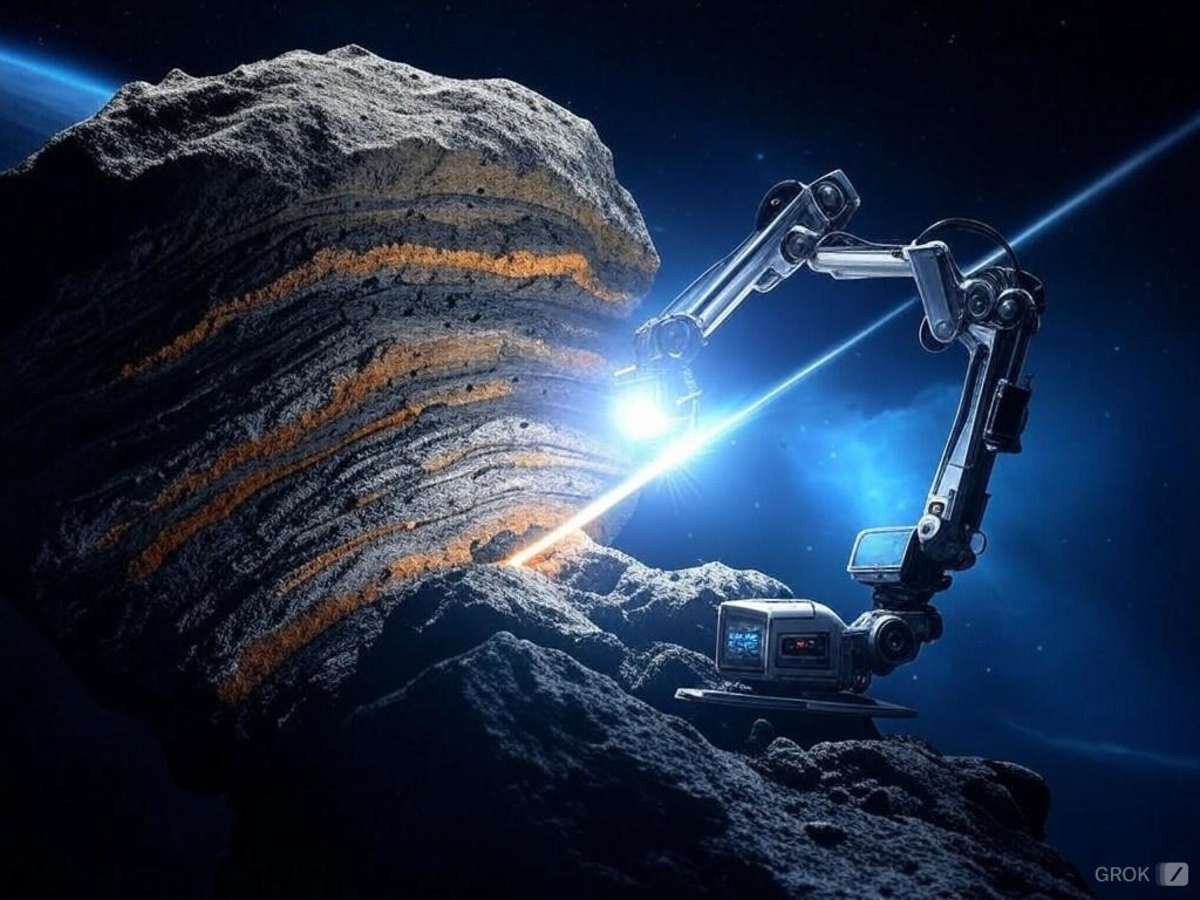n the vast expanse of space, where resources are abundant yet the environments are hostile, the integration of Artificial Intelligence (AI) into mining operations could revolutionize our approach to celestial resource extraction. Here's how AI is poised to transform space mining:
1. Autonomous Prospectors and Mapping
- Site Identification: AI algorithms can analyze data from satellites and remote sensing to identify potential mining sites. By processing hyperspectral imagery and radar data, AI can pinpoint locations rich in valuable minerals or water, reducing the risk and cost associated with human-led prospecting in space. This is particularly useful in areas where traditional methods are impractical, like asteroids or the moon.
https://www.linkedin.com/pulse/applications-ai-space-mining-katleho-mokhele - Mapping and Navigation: Once a site is identified, AI-enabled drones or rovers can autonomously map the terrain. These machines can navigate through complex, alien landscapes, creating three-dimensional models of the area, which are crucial for planning mining operations. NASA's Mars rovers already employ AI for such purposes, showcasing the potential for more advanced applications in mining.
https://www.aiacceleratorinstitute.com/ai-in-space-exploration/
2. Resource Extraction and Management
- Automated Mining: AI can control drones, robots, or rovers designed for mining, allowing them to extract resources without human intervention. These machines can be programmed to analyze the material composition in real-time, adjusting their operations based on what they find. This not only increases efficiency but also allows for operations in environments where human presence is unfeasible.
https://medium.datadriveninvestor.com/artificial-intelligence-and-asteroid-mining-will-be-a-necessary-match-made-in-the-heavens-9cd46225da23?gi=1370ec601d98 - Resource Optimization: AI can optimize the mining process by analyzing data on resource distribution, extraction rates, and equipment performance. This leads to smarter resource management, ensuring that operations are both economically viable and environmentally sustainable. For instance, AI can determine the best methods for extraction based on the type of asteroid or lunar site encountered.
https://ui.adsabs.harvard.edu/abs/2024RePol..9104947G/abstract
3. Safety and Maintenance
- Predictive Maintenance: Given the harsh conditions of space, maintaining equipment is paramount. AI systems can predict when parts of a mining machine might fail or need maintenance, using sensor data to forecast wear and tear. This predictive capability is crucial for operations far from Earth, where repairs can be logistically challenging. https://www.theaidream.com/post/artificial-intelligence-in-space-exploration
- Hazard Detection: AI can monitor for potential hazards, from sudden changes in the space environment to mechanical issues. By integrating AI with sensory equipment, mining vehicles can react autonomously to threats, ensuring the safety of the operation and any personnel or assets involved. https://miningdigital.com/articles/top-10-uses-of-artificial-intelligence-in-mining
4. Data Analysis and Decision Making
- Big Data Handling: Space missions generate vast amounts of data. AI's ability to handle and analyze big data swiftly allows for real-time decision-making, crucial for dynamic mining operations where conditions can change rapidly. Machine learning models can sift through geological data to improve the decision-making process regarding where and how to mine. https://www.online-sciences.com/robotics/applications-of-artificial-intelligence-in-space-industry-nasa-artificial-intelligence/
- Strategic Planning: AI can assist in long-term planning by simulating various scenarios based on current data, helping to design missions that are more likely to succeed. This includes optimizing the trajectory for mining missions, managing logistics, and even predicting the market value of extracted resources. https://emerj.com/ai-in-mining-mineral-exploration-autonomous-drills/
5. Legal and Ethical Considerations
- Regulation and Compliance: With AI, mining operations can be programmed to adhere to space laws and ethical guidelines, ensuring that mining does not lead to space pollution or conflict with international treaties like the Outer Space Treaty. AI can monitor compliance with these regulations in real-time. https://ui.adsabs.harvard.edu/abs/2024RePol..9104947G/abstract
Conclusion
The marriage of AI with space mining opens up a realm of possibilities, from making operations more sustainable and efficient to expanding our reach into the cosmos. As we stand on the brink of this new era, the challenges are significant, but so are the potential rewards. AI not only promises to make space mining a reality but also to do so in a way that could benefit humanity in unprecedented ways, from providing resources for space colonization to contributing to the economy back on Earth.
The integration of AI in space mining is still in its nascent stages, but with each technological leap, we move closer to a future where space is not just a frontier to explore but also a new domain to harvest. The trends observed on platforms like X reflect a keen public interest and optimism about these developments, signaling a bright future for space resource utilization.
